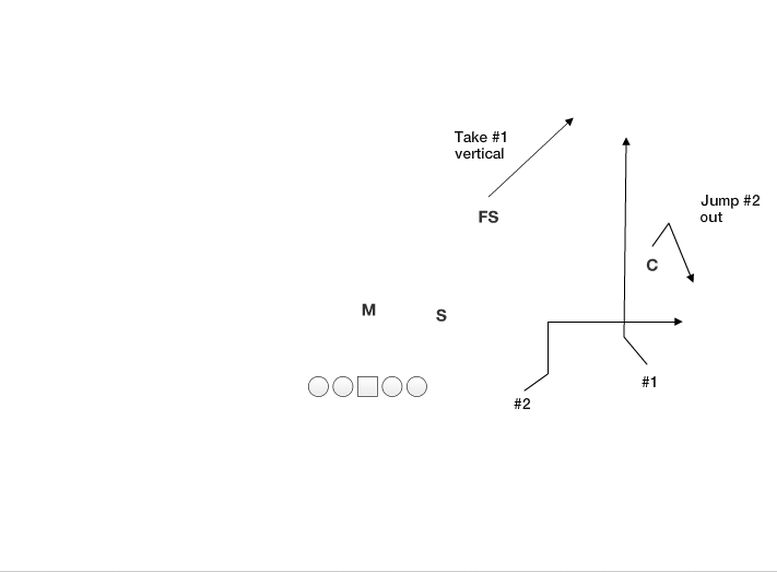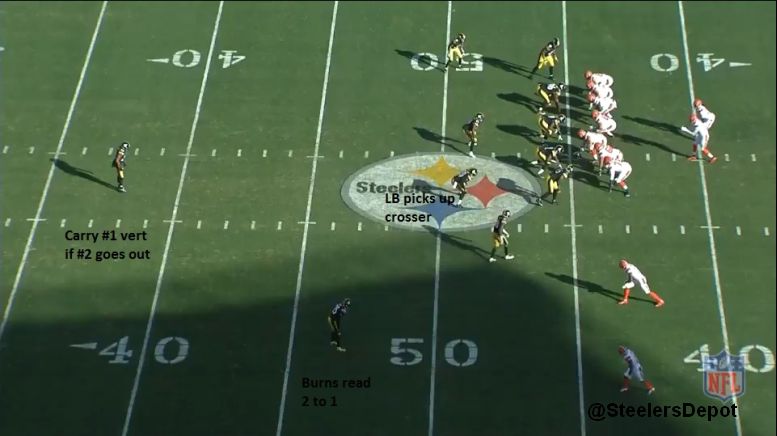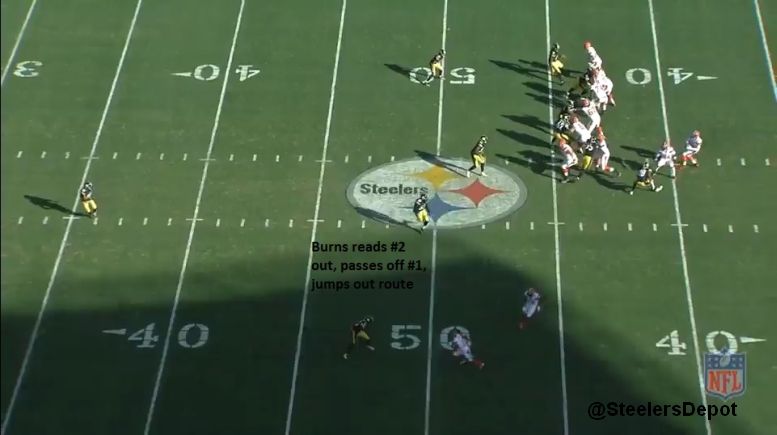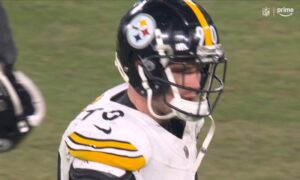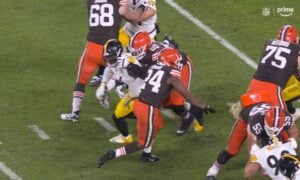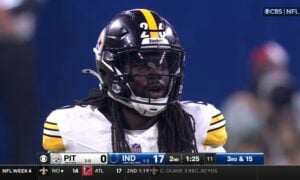We’ve spent a lot of time discussing the transition the Pittsburgh Steelers’ defense is making. Led by Keith Butler, there’s a blend between his and Mike Tomlin principles with something new entirely, the desire to play straight man coverage. It’s one of the top things I’ll be studying once the season kicks off.
Having said all that, it doesn’t mean the team is entirely abandoning those Dick LeBeau concepts. And ideally, there will be a mix between man and zone. Literally. We’re talking about pattern reading today, a worthwhile refresher in the offseason. Pattern reading, a mix of man and zone based on what the offense runs, is the hybrid solution for the Steelers to use. Specifically, we’re diving into Palms coverage, the most popular pattern match Butler runs.
There’s tons of examples of Butler playing Palms, several we’ve dedicated posts for. I want to show you a new one today. And it’s further evidence of when the Steelers decide to employ this coverage.
It seems it is one of their checks to any slot set. A slot set defined as both receivers set to one side of the formation. From LeBeau’s playbook, explaining what it is.
The new example we’ll show is from Week 17 against the Cleveland Browns. It was an inconsequential play, an incomplete pass, but the concept still matters. The Brown align in a slot set, setting the Steelers in their palms coverage.
Palms, also known as 2 Trap or 2 Read, is a pattern match coverage by the cornerback, safety, and callside linebacker. The cornerback is reading 2 to 1, meaning, he is keying in on the inside (slot) receiver’s route, which will dictate his assignment.
If #2 runs an out-breaking route, the corner will peel off #1 and jump the out route by #2. The free safety will then be responsible for #1 vertical. If #1 and #2 go vertical, the corner will match #1 and the safety #2, turning it into straight man coverage. A general example.
Generally, it’s a man-clue concept, meaning if one of the receivers stems inside as a non-vertical threat (vertical usually defined as past linebacker depth).
On this play against the Browns, the #2 receiver runs an out route while #1 runs vertical. Burns – with an inside alignment and eight yards off – reads 2 to 1, trying to jump the out. #1 gets passed off to Mike Mitchell with Ryan Shazier bracketing the inside, taking away any inside-breaking route (like a dig) while the safety protects over the top.
The linebacker helps the safety’s primary conflict on this concept. Because he’s focused on protecting the sideline, and often will open his hips if #1 presses vertical, it’s tough for him to adequately play a dig or post. Has to recognize, flip his hips, and get to the upfield shoulder. Linebacker would help squeeze the throw and discourage the QB from testing it.
Griffin’s throw ends up in the ground, he may have saw Burns close at the last second and basically threw the ball away, but it’s nearly an INT. If Burns wasn’t bumped by #1 when he tried to drive, it still could’ve turned into an interception.
Here’s a closer look at what Burns is reading.
Palms is a concept we’ve seen time and time again. To better results. The best – and really the first time I talked about it – was Ross Cockrell’s INT in 2015.
Here it is vs Miami in the playoffs, leading to a sack/forced fumble (the Dolphins line up in a slot set and then motion but the Steelers don’t check out, simply rotating their safeties).
To that last point, Palms coverage is often coupled with LeBeau’s Storm Fire Zone, with the callside safety blitzing. That’s what you see from Mitchell in the Dolphins and Ravens game and Sean Davis in the original Browns’ clip.
I want to put the focus less on the fire zone and more on the concept of palms. But fire zones are still going to be common place in this defense. One Steelers’ install sheet I came across had, by my count, six different fire zones listed (storm appeared to be one of them). And palms might be a concept the team expands upon as they run more Cover 2 and press their cornerbacks, allowing them to make more plays at the line of scrimmage instead of playing off zone and being reactive.



